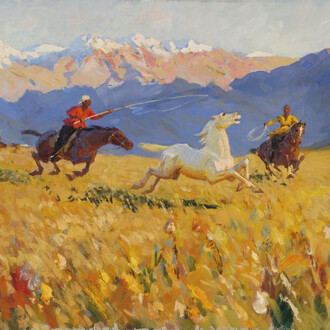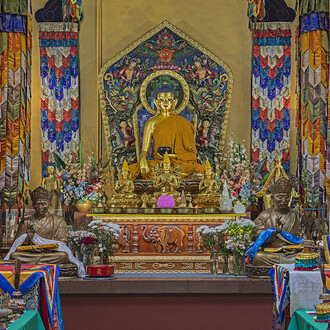The exhibition will display paintings and watercolors by the artist as well as a documentary section.
The exhibition includes the works of the 1970–2010s from the Tretyakov Gallery’s funds, the artist’s family collection and Dmitry Vladimirovich Sarabyanov’s family collection.
Yuri Larin had formulated his own method, which he called the concept of ultimate state, by the mid-1970s. The artist saw the aim of his work in ‘‘bringing the struggle with representation for musicality’’ that takes place on canvas or paper to the point where the musical beginning in painting begins to take over, but does not destroy the representational. This principle always remained fundamental for Larin given all further transformations of his views.
Landscapes served as a most important stage for the implementation and development of his ideas. The artist would always draw in his pad everything worthy of his attention and potentially interesting. It was followed by that very struggle for achieving the ultimate state. It was reflected in his cycles and series formally pegged to various geographical locations.
Landscape is a major genre in Larin’s artwork but not the only one. In parallel, in a steady dotted line, he worked on portraits, still-lifes, and, in the last period of his life, on multifigured compositions (for example, Malakhovka. Out of the Waters. 2012).
Larin did not look like a lonely hermit, he was a member of the Moscow Union of Artists for a long time maintaining friendly and professional relations with many of his colleagues. Yet a retrospective look allows realizing very clearly how many individual features the artist had – both in his “handwriting”, in the deliberately narrowed genre range, and in his philosophy of artwork.
Yuri Larin’s first exhibition in the Tretyakov Gallery is intended to give an idea of the way covered by the artist in his strife to establish and add nuances to the concept of ultimate state that he had once declared.












